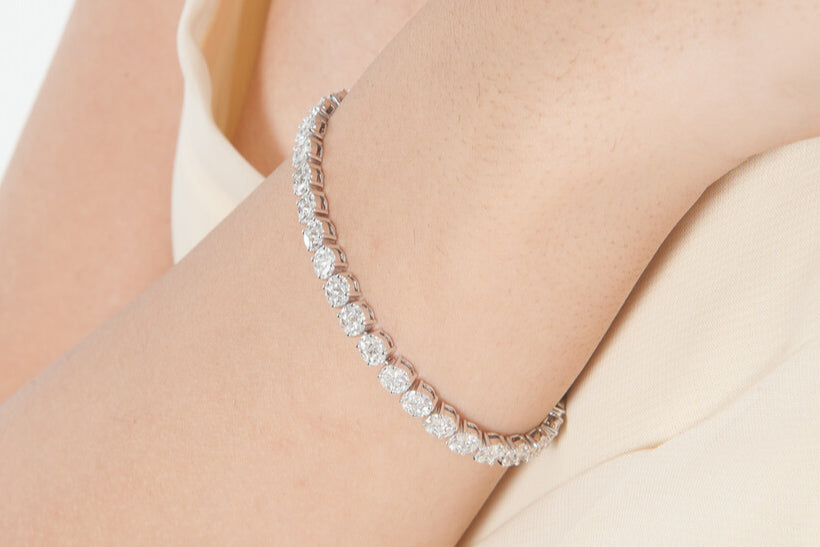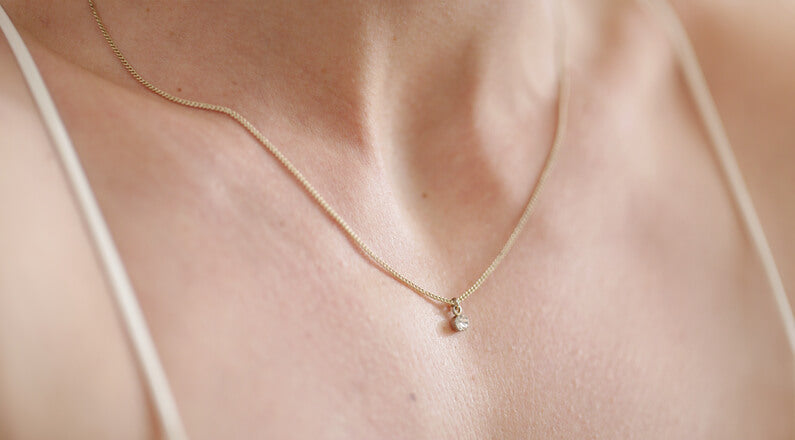Guide to Different Moissanite Cuts
Share
Unveiling the Sparkle: A Guide to Different Moissanite Cuts and Their Impact on Brilliance and Fire
The unique sparkle and fire of moissanite have made it a popular choice for those seeking an affordable and eye-catching gemstone. One crucial factor that affects moissanite's appearance is its cut. A well-cut moissanite stone enhances the stone's brilliance, fire, and overall beauty. In this blog post, we will explore the different cuts of moissanite and how each cut influences the gemstone's sparkle and fire.
Understanding Moissanite Cuts
A gemstone's cut refers to its shape, proportions, symmetry, and polish. The cut significantly impacts the way light interacts with the stone, ultimately affecting its brilliance and fire. Moissanite is available in various cuts, each offering unique characteristics and appeal. Here are some popular moissanite cuts and how they affect the gemstone's appearance:
Round Brilliant Cut
The round brilliant cut is the most popular cut for moissanite due to its exceptional brilliance and fire. This cut features 58 facets, allowing it to capture and reflect light in a way that maximizes sparkle. The round brilliant cut's symmetrical shape and optimal light performance make it an excellent choice for those seeking a classic and dazzling gemstone.
Cushion Cut
The cushion cut, characterized by its square or rectangular shape with rounded corners, offers a vintage-inspired aesthetic. This cut features larger facets, which can produce a unique "chunky" sparkle compared to the smaller, more precise sparkle of the round brilliant cut. Cushion cut moissanite stones exhibit a beautiful balance of brilliance and fire, making them a popular choice for engagement rings and other fine jewelry.
Princess Cut
The princess cut is a square or rectangular cut known for its sharp, modern appearance. This cut's unique facet arrangement maximizes the stone's brilliance, resulting in a vibrant and fiery gemstone. The princess cut's versatility makes it suitable for various jewelry styles, from contemporary to classic.
Oval Cut
The oval cut is an elongated version of the round brilliant cut, offering similar brilliance and fire but with a unique shape. This cut's elongated shape can create the illusion of a larger stone, making it an attractive choice for those seeking a more substantial appearance without sacrificing sparkle.
Pear Cut
The pear cut, sometimes called the teardrop cut, combines the brilliance and fire of the round brilliant cut with the elongated, slender shape of a marquise cut. This cut's unique shape can create a slimming effect on the finger, making it a popular choice for engagement rings and other statement pieces.
Emerald Cut
The emerald cut is a rectangular cut with step-like facets that create a mirror-like effect. This cut emphasizes a stone's clarity and produces a more subdued, elegant sparkle compared to the brilliance and fire of other cuts. The emerald cut's sophisticated appearance makes it a popular choice for those seeking a vintage-inspired or Art Deco aesthetic.
Asscher Cut
The Asscher cut, a close relative of the emerald cut, features a square shape with step-like facets and cropped corners. This cut emphasizes a stone's clarity and offers a unique, understated sparkle. The Asscher cut's vintage appeal and geometric elegance make it an attractive choice for those seeking a distinctive and stylish gemstone.
Conclusion
The cut of a moissanite stone significantly influences its overall brilliance, fire, and allure. Familiarizing yourself with the various cuts and their effects on a gemstone's appearance allows you to make an educated decision when selecting the ideal moissanite stone for your jewelry. With options ranging from the timeless round brilliant cut to the distinct Asscher cut, you can find a moissanite gemstone that showcases your unique style and preferences. Choose the perfect cut to emphasize the captivating sparkle and fire of your moissanite, creating a stunning and memorable piece of jewelry that you'll cherish for years to come.
Read more about the 4C's of Moissanite


